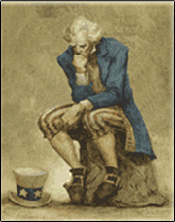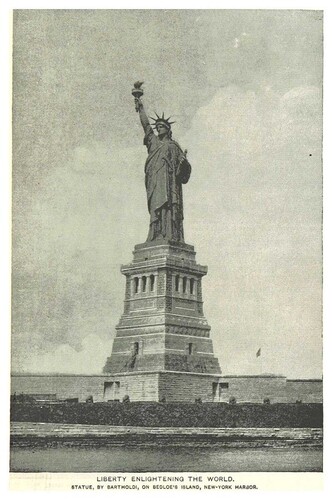
(function(d, s, id) { var js, fjs = d.getElementsByTagName(s)[0]; if (d.getElementById(id)) return; js = d.createElement(s); js.id = id; js.src = “https://connect.facebook.net/en_US/sdk.js#xfbml=1&version=v3.0”; fjs.parentNode.insertBefore(js, fjs); }(document, ‘script’, ‘facebook-jssdk’)); –>
–>
March 15, 2024
I was reading an article on the importance of identifying as a Black American. The adjective “Black” suggests their shared struggles. It made me wonder if I should identify as “Irish American” rather than American?
‘); googletag.cmd.push(function () { googletag.display(‘div-gpt-ad-1609268089992-0’); }); document.write(”); googletag.cmd.push(function() { googletag.pubads().addEventListener(‘slotRenderEnded’, function(event) { if (event.slot.getSlotElementId() == “div-hre-Americanthinker—New-3028”) { googletag.display(“div-hre-Americanthinker—New-3028”); } }); }); }
The existence of Irish Americans is a testament to their ancestors surviving against the odds, but I wasn’t raised to be a victim. I was raised to have thick skin, stay out of trouble, pay my own way, and to know if I worked hard the sky was my limit. But shouldn’t I too embrace the struggles of my ancestors?
In the 17th century, the English cleansed Ireland of 616,000 people or about 43% of the population. After cleansing, their land was confiscated and tens of thousands were transported to the Thirteen Colonies as indentured servants.
In 1695, the British Penal Laws stripped the Irish of basic freedoms. In 1740, famine killed 400,000 Irish. Fewer would have died if British politicians had not enforced policies to exacerbate the famine. In 1776, the Irish owned 5% of Ireland’s land.

Graphic: Liberty Enlightening The World. British Library.
Wikimedia Commons.org. Public Domain.
‘); googletag.cmd.push(function () { googletag.display(‘div-gpt-ad-1609270365559-0’); }); document.write(”); googletag.cmd.push(function() { googletag.pubads().addEventListener(‘slotRenderEnded’, function(event) { if (event.slot.getSlotElementId() == “div-hre-Americanthinker—New-3035”) { googletag.display(“div-hre-Americanthinker—New-3035”); } }); }); }
Most early Irish Catholic immigrants to America came as indentured servants. The Atlantic voyages were perilous.
“Systematic villainy in the handling of human cargo was perhaps not so characteristic in this trade (Atlantic slave trade) as in the poverty-stricken white immigrants… I never saw an instance of cruelty in ten to twelve years in the [African] branch equal to the cruelty exercised on the poor Irish…They were to be delivered upon the cheapest terms possible.”
There was no welcome mat in America for the Irish. Hatred followed them across the Atlantic and so did the penal laws. In the 18th century, when non-Anglican Christians found acceptance in the Colonies, the Catholics did not. It was decreed that:
“forever hereafter there shall be liberty of conscience allowed in the worship of God to all Christians (except Papists).”
Between 1846 and 1855, 1.5 million Irish died of starvation. Historians note the British didn’t cause the 19th century potato blight, but they did cause the famine. The British thought Irish Catholics that refused to convert got what they deserved. The British saw the famine as heaven sent. Today, this is called ethnic cleansing or genocide.
Famine wasn’t enough punishment. About 500,000 starving Irish Catholics were evicted for not paying rent when crops failed. The stubborn Irish finally had enough. Nearly 2 million migrated to North America, and most to the United States. Some were paid to leave by the government and landlords. For the Irish, the decision was easy: emigrate or die. A lot died enroute. Many Irish were half dead when boarding ships for North America. The ships were called coffin ships, and on average, 20-30% died.
‘); googletag.cmd.push(function () { googletag.display(‘div-gpt-ad-1609268078422-0’); }); document.write(”); googletag.cmd.push(function() { googletag.pubads().addEventListener(‘slotRenderEnded’, function(event) { if (event.slot.getSlotElementId() == “div-hre-Americanthinker—New-3027”) { googletag.display(“div-hre-Americanthinker—New-3027”); } }); }); } if (publir_show_ads) { document.write(“
Too poor to travel inland, the Irish set up residences near their ports of entry in the northeast and predominantly in and around NYC and Boston.
“The Irish were subjected to far worse conditions than later arrivals…Though Jews and Italians lived 5 to 15 to a room in roach-infested, dilapidated, and dark buildings, their conditions do not seem to be as horrendous as those of the Irish.”
The NYC Irish had a mortality rate that was more than double the average.
Irish poverty was seen as a threat to the nation. The anti-Irish newspaper, the Boston Daily Bee, asserted that “most of the danger to public health springs from the foul and disgusting habits of the Irish population.”
It was illegal to deport naturalized citizens, but that was no deterrence to deporting about 50,000 Irish. When arriving in Britain, some were forcibly returned to America. The Irish were not welcome anywhere.
Anti-Irish Catholic crusaders burned churches, and murdered priests and Catholic immigrants to send the message that the Irish were an existential threat. In one of America’s earliest social justice movements, murderers and arsonists of Catholics and their property went free.
In the North, the Irish competed with blacks for jobs and slum space. Blacks weren’t prized; they were just preferred to the Irish. Edward Freeman, a liberal British politician, and esteemed history professor at Trinity College in Oxford, England had this to say about America in 1881.
“This would be a grand land if only every Irishman would kill a Negro and be hanged for it.”
The Irish dominated the hazardous jobs of building sewers and canals. In the South, at first, slaves were used to build canals, but when epidemics of yellow fever and cholera surfaced, it was time to bring in the Irish.
Historian Arthur Schlesinger (1888-1965) called the discrimination against Catholics “the deepest bias in the history of the American people.” There were so many reasons to hate the Irish Catholics: religion, poverty, ethnicity, inherent inferiority, indomitability, fractiousness, and willingness to work cheap. That life in America was better than in Ireland was a condemnation of life under British rule. But it was better; in America there was a chance to change one’s destiny.
The history of Irish Americans is one of shared struggles, but it is also the history of America’s immigrants. But nowhere else in the world can people say it was the collective struggles of our ancestors that turned a nation of people of all origins that fled persecution in their homelands and endured it again in America, into a nation where every American has the opportunity to change their life.
On St. Paddy’s Day I will again break out my once-a-year Kelley green shirt, and then place my everyday baseball cap with the American flag on my head because one day a year I am Irish American, but every day I’m a very proud American, thankful to my ancestors for enduring hatred to help build the world’s most antiracist nation.
<!–
–>
<!– if(page_width_onload <= 479) { document.write("
“); googletag.cmd.push(function() { googletag.display(‘div-gpt-ad-1345489840937-4’); }); } –> If you experience technical problems, please write to [email protected]
FOLLOW US ON
<!–
–>
<!– _qoptions={ qacct:”p-9bKF-NgTuSFM6″ }; ![]() –> <!—-> <!– var addthis_share = { email_template: “new_template” } –>
–> <!—-> <!– var addthis_share = { email_template: “new_template” } –>





